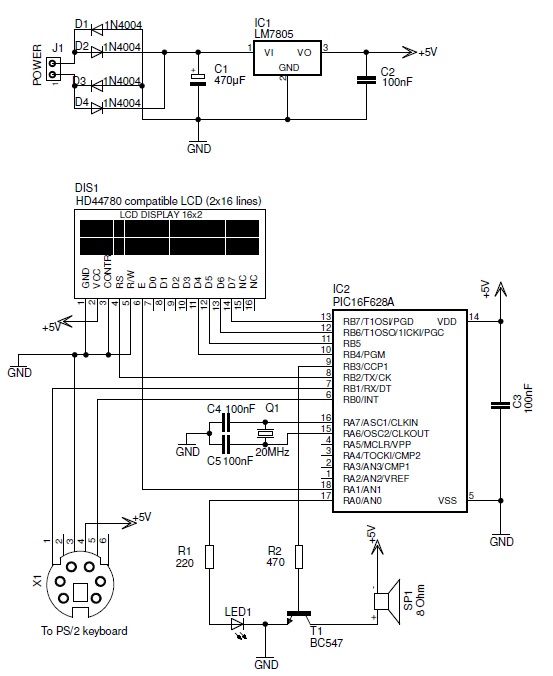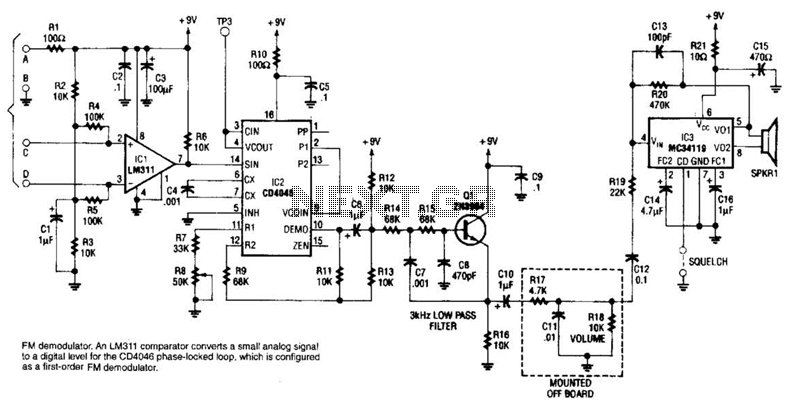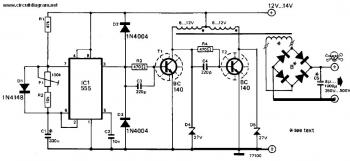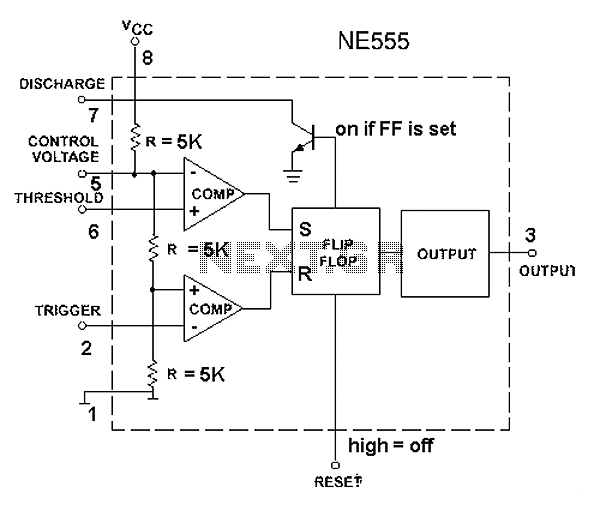
Voice bandpass circuit diagram
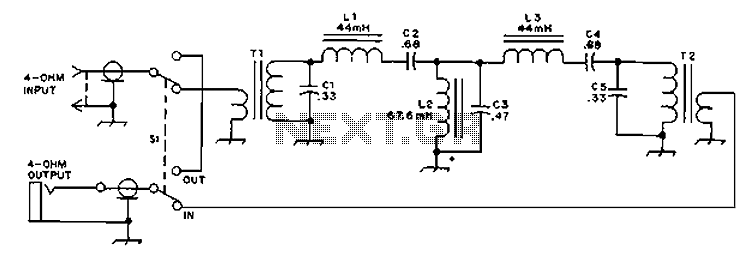
The circuit provides an 8-ohm output for connecting communication receivers and low-impedance speakers or headphones, featuring harmful interference suppression for continuous random voice transmission. The passband ranges from 55 to 2530 Hz with a 3 dB bandwidth. Inductors L1 and L3 are rated at 4 mH, while inductor L2 is rated at 88 mH.
The circuit is designed to facilitate audio signal transmission while ensuring compatibility with various low-impedance audio devices. The 8-ohm output is particularly suited for communication receivers, enabling effective audio delivery to both speakers and headphones. The inclusion of interference suppression mechanisms is critical in maintaining audio clarity and preventing degradation of the transmitted signal from external noise sources.
The specified passband of 55 to 2530 Hz indicates the frequency range within which the circuit operates effectively, making it suitable for a wide array of audio frequencies typically encountered in voice communication. The 3 dB bandwidth implies that the circuit will maintain a relatively flat frequency response within this range, ensuring minimal signal loss and distortion.
Inductors L1 and L3, each rated at 4 mH, and inductor L2, rated at 88 mH, play a vital role in the circuit's filtering capabilities. The inductors are configured to manage the impedance and enhance the overall performance of the audio transmission. The lower inductance values of L1 and L3 may be utilized for high-frequency filtering, while the higher inductance of L2 can be responsible for low-frequency response, allowing for a balanced audio output.
Overall, this circuit design is optimized for efficient audio transmission in communication applications, providing a robust solution for connecting to various audio output devices while minimizing interference and maintaining audio integrity across the specified frequency range.8 ohm output for connecting communication receivers and 8 ohm speaker or low impedance phones, harmful interference suppression continuous random voice transmission. Passband 3 55 to 2530Hz, 3dB. L1 and L3 are 4amH the ring. L2 is 88mH the ring.
The circuit is designed to facilitate audio signal transmission while ensuring compatibility with various low-impedance audio devices. The 8-ohm output is particularly suited for communication receivers, enabling effective audio delivery to both speakers and headphones. The inclusion of interference suppression mechanisms is critical in maintaining audio clarity and preventing degradation of the transmitted signal from external noise sources.
The specified passband of 55 to 2530 Hz indicates the frequency range within which the circuit operates effectively, making it suitable for a wide array of audio frequencies typically encountered in voice communication. The 3 dB bandwidth implies that the circuit will maintain a relatively flat frequency response within this range, ensuring minimal signal loss and distortion.
Inductors L1 and L3, each rated at 4 mH, and inductor L2, rated at 88 mH, play a vital role in the circuit's filtering capabilities. The inductors are configured to manage the impedance and enhance the overall performance of the audio transmission. The lower inductance values of L1 and L3 may be utilized for high-frequency filtering, while the higher inductance of L2 can be responsible for low-frequency response, allowing for a balanced audio output.
Overall, this circuit design is optimized for efficient audio transmission in communication applications, providing a robust solution for connecting to various audio output devices while minimizing interference and maintaining audio integrity across the specified frequency range.8 ohm output for connecting communication receivers and 8 ohm speaker or low impedance phones, harmful interference suppression continuous random voice transmission. Passband 3 55 to 2530Hz, 3dB. L1 and L3 are 4amH the ring. L2 is 88mH the ring.
